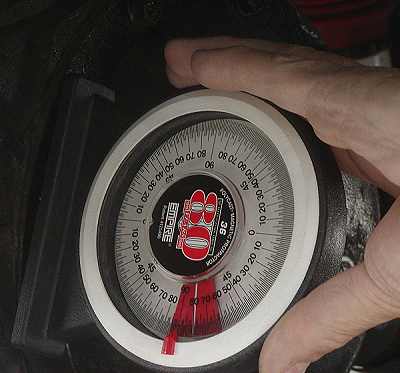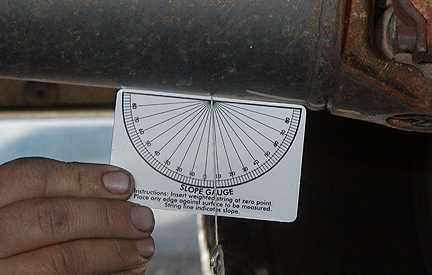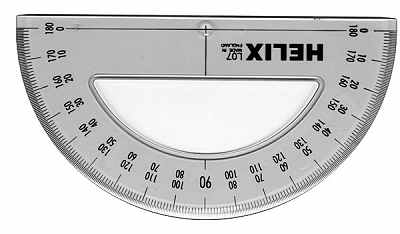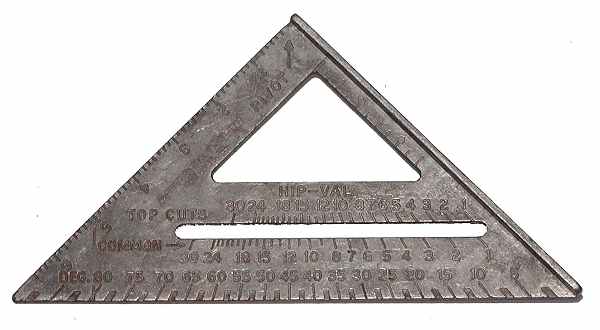Slopes & Angles
I try to define a slope as the relationship of a single line or plane in relationship to the horizon and an angle is the relationship of one slope to another. In order to determine the net joint angle, we 1st need to measure the slope of the pinion, transmission or transfer case and the drive shaft. The differences are the net joint angle.
In order to determine the slopes you will need to have some sort of tool to do so. There are a number of inexpensive ways that this can be done. You could purchase an "angle finder" at most hardware stores. (Usually about $8.00-10.00) This will usually be found in the tool department near the carpenter’s levels. It will have at least one flat base, and a circular face with graduation around it’s perimeter and a weighted plumb bob in the center.

Or you could get a plastic protractor like you may have used in Junior High School. You’ll need to have one with a flat base and a hole at the zero point. If you tie a short piece of thread or dental floss (6" or so) through the hole at the zero point and a small nut at the other end to serve as a weighted plumb bob.
You can measure slopes with this:


Any flat machined surface on your engine transmission transfer case or differential will be either perpendicular or parallel to the centerline. You can now place the protractor against the drive shaft to determine it’s slope, And likewise on the against the transmission or transfer case and differential to determine their slopes.

My experience has shown that the easiest way to determine the slope of the pinion is by measuring off of the flat machined surface on the inspection cover side of the differential. This surface will be just to the right and left of the inspection cover and will be perpendicular to the centerline of the pinion.



Provided by Tom Woods Driveshafts.











